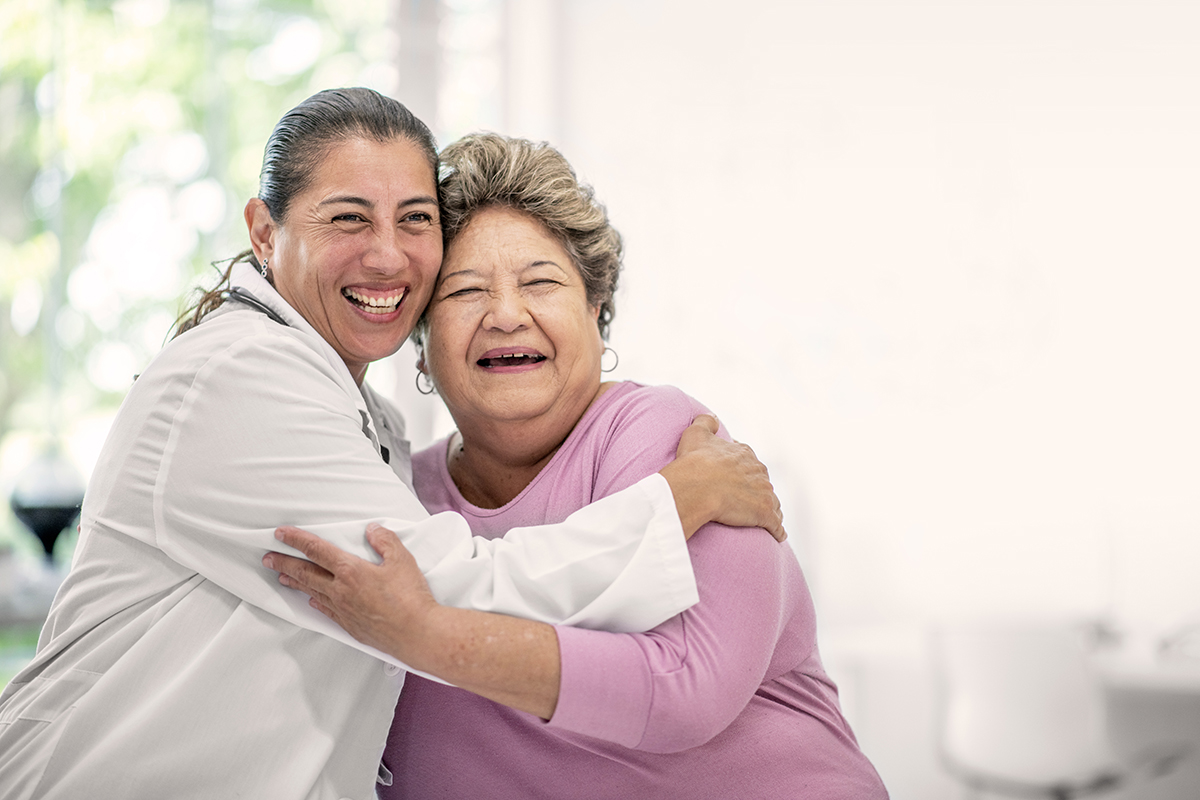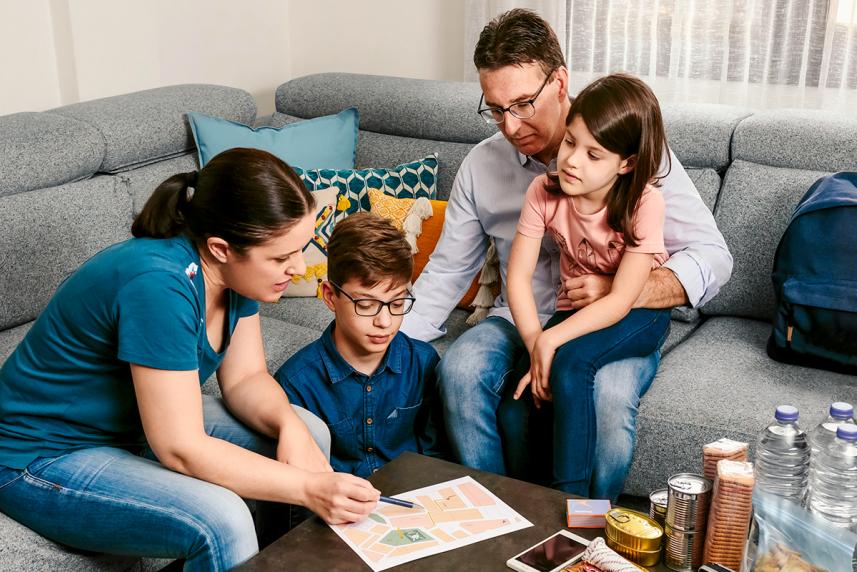
We have more than 90,000 doctors at over 2,000 locations. Our team will help you get the care you need, when and where you need it.

You can’t prevent natural disasters. But you can take action to stay safe during them. Here’s how to prepare.
Here’s a health- and safety-related question for you to think about: What’s the worst time to prepare for a natural disaster? If you answered, “During a natural disaster,” you’re exactly right.
But here’s the thing: Natural disasters just happen. They’re completely out of your control.
The good news? You can control how prepared you will be for them. Then, if a hurricane, tornado or wildfire strikes, you’ll have a safety plan in a place.
“Disaster planning is crucial for everyone,” says Matthew McGlothlin, MD. He’s the senior medical director with WellMed Medical Management, part of Optum, in San Antonio. “As our weather events become increasingly challenging, it’s never been more important for people to know what steps they need to take to protect themselves.”
With a smart plan, you can be ready for anything. Take these five steps today to help keep yourself safe tomorrow.

We have more than 90,000 doctors at over 2,000 locations. Our team will help you get the care you need, when and where you need it.
Let’s say you’re listening to the radio and hear a tornado warning.
The first thing to know: If the tornado touches down nearby, it may cut you off from the things you rely on to stay safe and healthy. That could include electricity and running water.
Ready.gov, a website run by the U.S. Department of Homeland Security (DHS), suggests putting together a go-bag filled with essentials you’ll need to stay safe and healthy.1 Stock your kit with items such as:
DHS also suggests having one gallon of water per person per day for several days, stored somewhere you can get to it easily. You’ll also want to pack several days’ worth of nonperishable food. That could be canned beans and vegetables, nuts or dry cereal. (Don’t forget formula if you have a baby and a manual can opener.)1
Do you take prescription medications? Keep a small supply stored in your kit. (You’ll also want to make sure they don’t expire.) If you wear contact lenses, include a backup pair. Keep your doctor’s contact information handy too. They may be able to help you locate supplies in the event of an emergency.
Natural disasters can hit anywhere, anytime. But some have a greater frequency in certain areas. And you’ll want to know which ones they are, so you can best prepare for them.
Here are the regions where certain types of natural disasters are most likely to hit, according to the American Red Cross:2
Even if certain natural disasters don’t typically happen in your region, you could still be affected when they happen elsewhere. Thanks to strong winds, smoke from wildfires even across the border in Canada or other states sometimes blankets neighboring states. That’s why it’s key to be ready for anything.
When disaster strikes, you should get in touch with your loved ones. You’ll want to let them know you’re OK and check to make sure they’re safe, too. That’s why an emergency meetup plan can come in handy.3
“Being prepared helps fight the natural fears that accompany disasters,” says Dr. McGlothlin. If you have young children, show them that you’re calm, prepared and in control, he explains. It’ll help them cope with these tough situations.
The American Red Cross suggests talking with your family about the best:3
Once you nail down a plan, you can do a few dry runs with your family to make sure everyone is on the same page. Think of them like the fire drills you did in school to prepare you for an actual emergency.
More than 1 in 3 Americans live in places with unhealthy levels of air pollution, according to the American Lung Association.4 That could be caused by nearby factories, pollen from trees, grass or weeds, or exhaust from vehicles.
Bad air quality can make it even harder on people with certain health issues such as asthma or chronic obstructive pulmonary disease (COPD).5 Those are breathing conditions that can cause coughing, wheezing and shortness of breath. Breathing in bad air can make those symptoms worse.
Some examples of natural disasters that can worsen air quality outdoors (and even inside your house) include:6
While you can’t control the way the wind blows, you can protect yourself from poor air quality.
Planning to spend time outside? Check the pollen count or the air quality index ahead of time. When those numbers are high, plan to stay indoors. If you do have to go outside on those days, wear a mask to keep yourself from breathing in air pollutants.
You can use a heating, ventilation and air-conditioning (HVAC) system to improve indoor air quality too. (HVAC is how you control the temperature in your home.) Adjust your settings to recirculate the air inside your home instead of blowing in air from outside. This helps keep the bad stuff out.6
You can buy first aid and other emergency preparedness supplies at the Optum Store — all from the comfort of home. Start exploring.
A natural disaster might knock out your power and the internet. Those might be places you turn to get first-aid help. So, it’s a good idea to know what to do ahead of time.
“Being trained in first aid and CPR are great skills to have at any time, especially during disasters,” says Dr. McGlothlin. (CPR stands for cardiopulmonary resuscitation. It is a way to save someone’s life when their heart stops beating.7)
Ready.gov suggests learning the following skills:8
The five tips above are a great place to start. And if a natural disaster does happen, you’ll be better prepared. And better yet, you’ll be safer and healthier in the process.
For more information and support regarding a natural disaster, visit Optum’s Critical Support Center.
Sources
© 2024 Optum, Inc. All rights reserved. Do not reproduce, transmit or modify any information or content on this website in any form or by any means without the express written permission of Optum.
The information featured in this site is general in nature. The site provides health information designed to complement your personal health management. It does not provide medical advice or health services and is not meant to replace professional advice or imply coverage of specific clinical services or products. The inclusion of links to other web sites does not imply any endorsement of the material on such websites.
Stock photo. Posed by model.